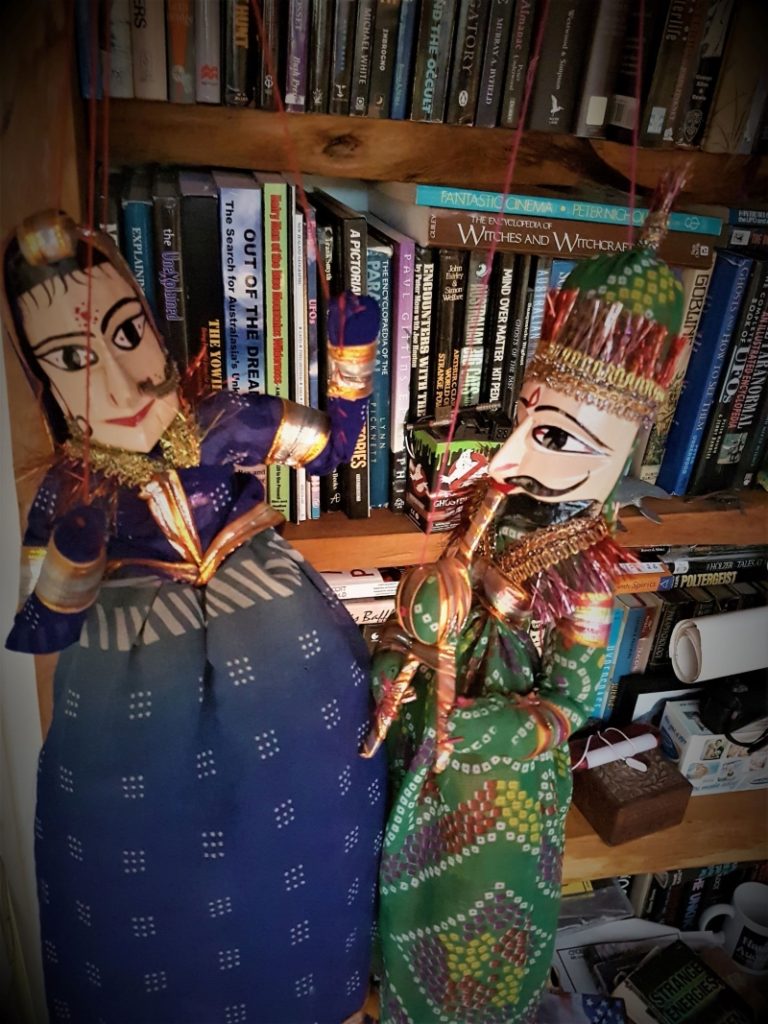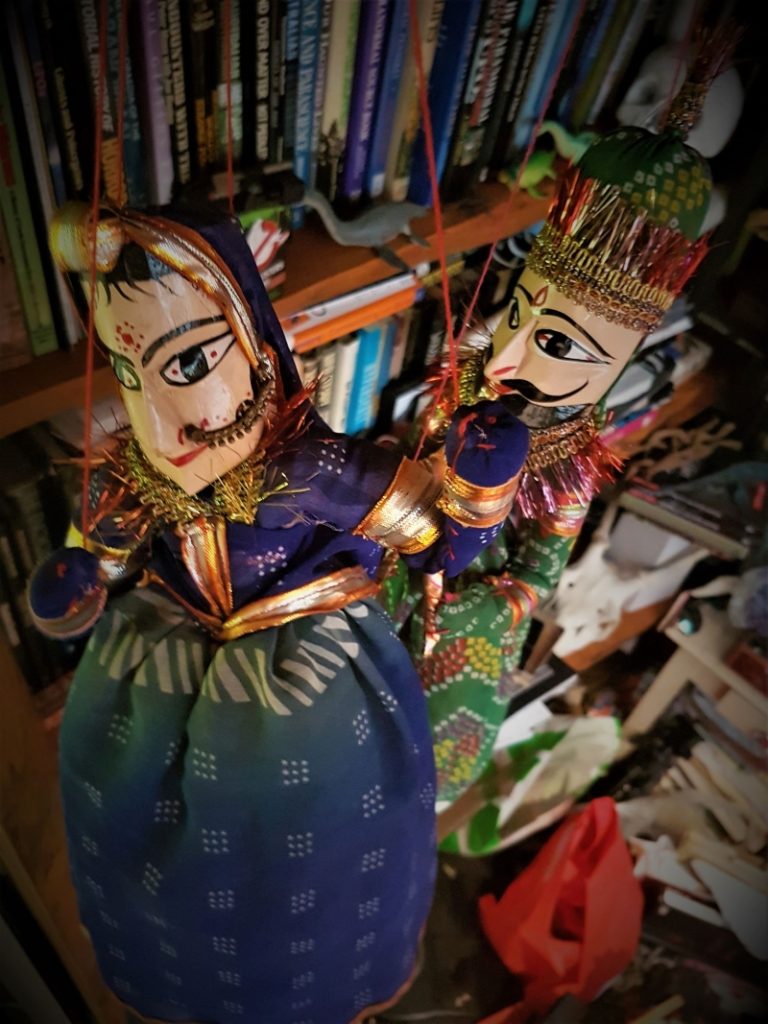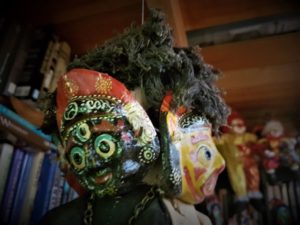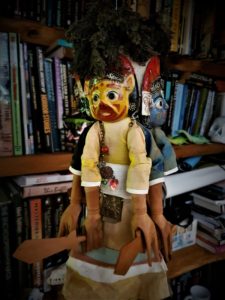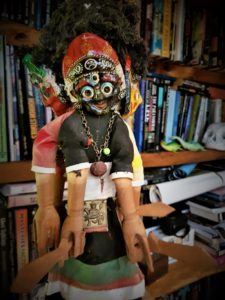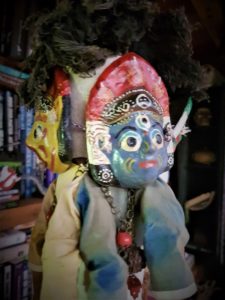In my collection hang three tatty looking marionettes.
Two that were gifted to me about 10 years ago. Two Kathputlis; Indian made puppets given to me by a work acquaintance who said they were no longer welcome in their home due to ‘‘their constant fighting” which was starting to frighten the family. According to them, the two puppets would start swinging and swaying when there was no breeze to be felt. They were hung together in a spare room which had only one small window that was never opened. Many a time, on entering the room, the puppets would often be found tangled and entwined in each other; legs and arms caught up in the strings like a couple of agile contortionists, without any obvious explanation.
Kathputli is a combination of two Rajasthani words; ”Kath” meaning wood and ”Putli”, being a doll. Kathputli is a puppet which is made from wood, cotton cloth and metal wire. Being a string marionette, it is controlled by a single string that passes from the top of the puppet over the puppeteers. They are used for entertainment, with the puppeteers making them dance or enact a play. These dolls are generally in the form of a couple. Their attire resembles the dressage and costume of the village people, and kings and queens in those days.
The Kathpulis are typically used in Rajasthani folk songs, ballads and sometimes even in folk tales. These folk tales convey the lifestyle of ancient Rajasthani tribal people with the kings, the queens and the magicians along with snake, horse, camel, and other props. Characteristic to this form are the shrill voices produced by the “Bhagavat”- lead puppeteer which are vocalized through a bamboo reed and gives plenty of atmosphere and dramatic effects.
The other allegedly haunted marionette, is one passed on to me in 2013 by a woman that had wanted to throw it out and thought I might be interested in taking it instead.
It is a handmade four – masked ”dancing” doll from Nepal known as Putali. Made around the 1980s, it too would sway and spin on its strings when there was no sign of a breeze or draft.
The woman stated that sometimes it would spin very fast one way, then slow, then spin back the opposite way to unwind itself. While that in itself is quite a normal action, what unnerved the woman was that it would suddenly stop, mid spin as if grabbed by an unseen hand to stop it spinning.
Putali are a type of marionette (string puppet) used by the Newars of the Kathmandu Valley. These puppets are made predominantly on the outskirts of the ancient city of Bhaktapur in the village of Thimi, where woodcarving and pottery are still lively arts. The putali are suspended from wooden manipulation slats by heavy thread secured through the headdress or crown, the back, and the hands. Each figure wears a long, colourful skirt of traditional fabric and, perhaps most interestingly, four masks. By turning the puppet one way, the audience sees one character; when that character turns its back to the audience, the face of another character is revealed, making it possible for one puppeteer to present multiple characters easily and quickly. The heads of the puppets are made out of papier-mâché or clay and are painted to look like the masks used in many theatrical rituals that also include iconic costumes and dance. This relates to the lively mask culture of the Newars that has been detailed by Toffin. The mask-like faces of the puppets are not human or realistic but are shaped and painted to represent familiar deities, such as the elephant god Ganesh, the tantric ferocious god Bhairab, the goddess Durga, and other characters from the Hindu or Buddhist pantheon. In their outstretched hands, the puppets hold emblematic props associated with the deity represented by the mask.


